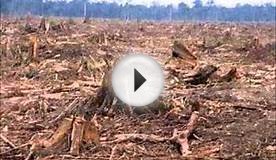Causes and effects of global warming
Ozone (O3) high in the atmosphere absorbs ultraviolet radiation from the sun, thereby protecting living organisms below from this dangerous radiation. The term ‘ozone hole’ refers to recent depletion of this protective layer over Earth's polar regions. People, plants, and animals living under the ozone hole are harmed by the solar radiation now reaching the Earth's surface—where it causes health problems from eye damage to skin cancer.
The ozone hole, however, is not the mechanism of global warming. Ultraviolet radiation represents less than one percent of the energy from the sun—not enough to be the cause of the excess heat from human activities. Global warming is caused primarily from putting too much carbon into the atmosphere when coal, gas, and oil are burned to generate electricity or to run our cars. These gases spread around the planet like a blanket, capturing the solar heat that would otherwise be radiated out into space. (For more detail on the basic mechanism of global warming, see carbon dioxide FAQ.)
Both of these environmental problems do, however, have a common cause—human activities that release gases into and alter the atmosphere. Ozone depletion occurs when chlorofluorocarbons (CFCs)—formerly found in aerosol spray cans and refrigerants—are released into the atmosphere. These gases, through several chemical reactions, cause the ozone molecules to break down, reducing ozone's ultraviolet (UV) radiation-absorbing capacity.
Because our atmosphere is one connected system, it is not surprising that ozone depletion and global warming are related in other ways. For example, evidence suggests that climate change may contribute to thinning of the protective ozone layer.
Figure 1. Seasonal thinning of the ozone layer above Antarctica.
Source: NASA
Ozone in the upper atmosphere
Ozone (O3) is found in two different parts of our atmosphere. Ground level ozone, a human health irritant and component of smog, is found in the lower atmosphere (troposphere) and has nothing to do with the "ozone hole." However, ozone in the stratosphere—the layer of atmosphere above the troposphere (see Figure 2)—accounts for the vast majority of atmospheric ozone. Stratospheric ozone is protective of human health as it absorbs ultraviolet radiation from the sun, preventing the radiation from hitting Earth's surface and harming living organisms from this biologically dangerous radiation.
Stratospheric ozone is produced from reactions that occur with the energy from the sun (photochemical reactions). Although ozone is created primarily at tropical latitudes, large-scale air circulation patterns in the lower stratosphere move ozone toward the poles, where its concentration builds up.


